Local Storage seems to be disabled in your browser.
For the best experience on our site, be sure to turn on Local Storage in your browser.
Choose your country
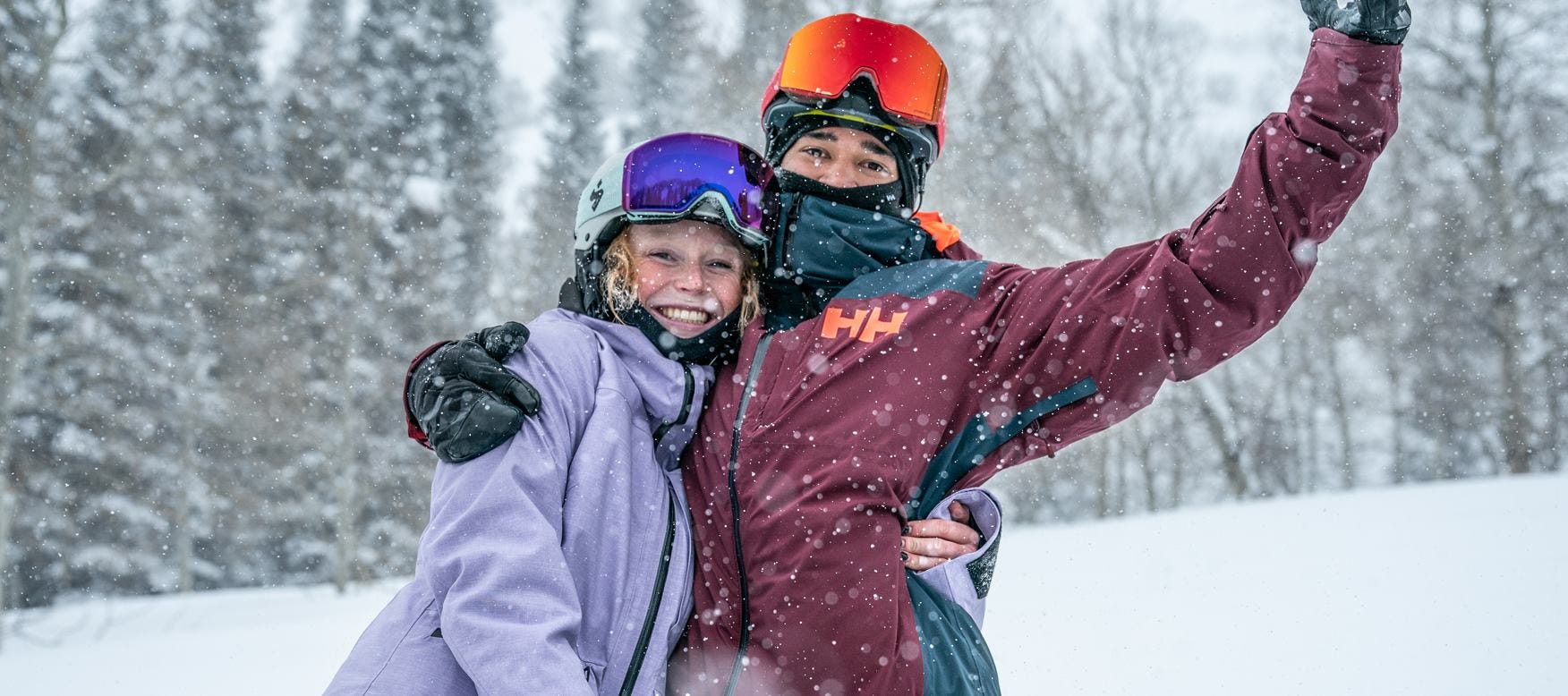
How to Choose a Ski Jacket: A Comprehensive Guide
October 23, 2023
Update: February 07, 2024
6 min read
Searching for the perfect ski jacket? Look no further. From national ski teams to ski patrollers and mountain guides worldwide, we collaborate with professionals to bring gear you can trust. Here, we cover everything you need to know about choosing a ski jacket – from types of skiing and the corresponding jackets to insulation, weight, weather protection, and more.
Explore our ski jackets
WHAT IS THE DIFFERENCE BETWEEN A SKI JACKET AND A NORMAL JACKET?
Choosing the right ski jacket can be just as important as getting the right set of skis. Not only should it keep you warm and dry, but it should have the technical features to get you through long days on the mountain. A regular winter jacket simply won't offer the same level of specialized protection, performance, and features required for an intense day on the mountain.
Key features of a ski jacket often include:
- waterproof or water-resistant material;
- insulation (optional, as some people prefer a shell) for added warmth;
- pockets for storage and/or a lift pass;
- a powder skirt to keep out snow;
- a helmet-compatible hood;
- ventilation zips
Our ski jackets are specifically designed for the different types of skiing. Made of innovative materials that protect you from wind, snow, and rain, they keep you warm and dry in harsh conditions and are designed with input from professionals who work in ski settings. Many of our ski jackets have additional features like hoods, adjustable cuffs, and powder skirts.
TYPES OF SKIING
Different types of skiing may mean different types of ski jackets. Jackets designed for backcountry or freeride skiing are lightweight and breathable, whereas downhill or resort skiing jackets typically tend to be heavier and more insulated. Let's take a look at three different kinds of skiing and the appropriate jackets:
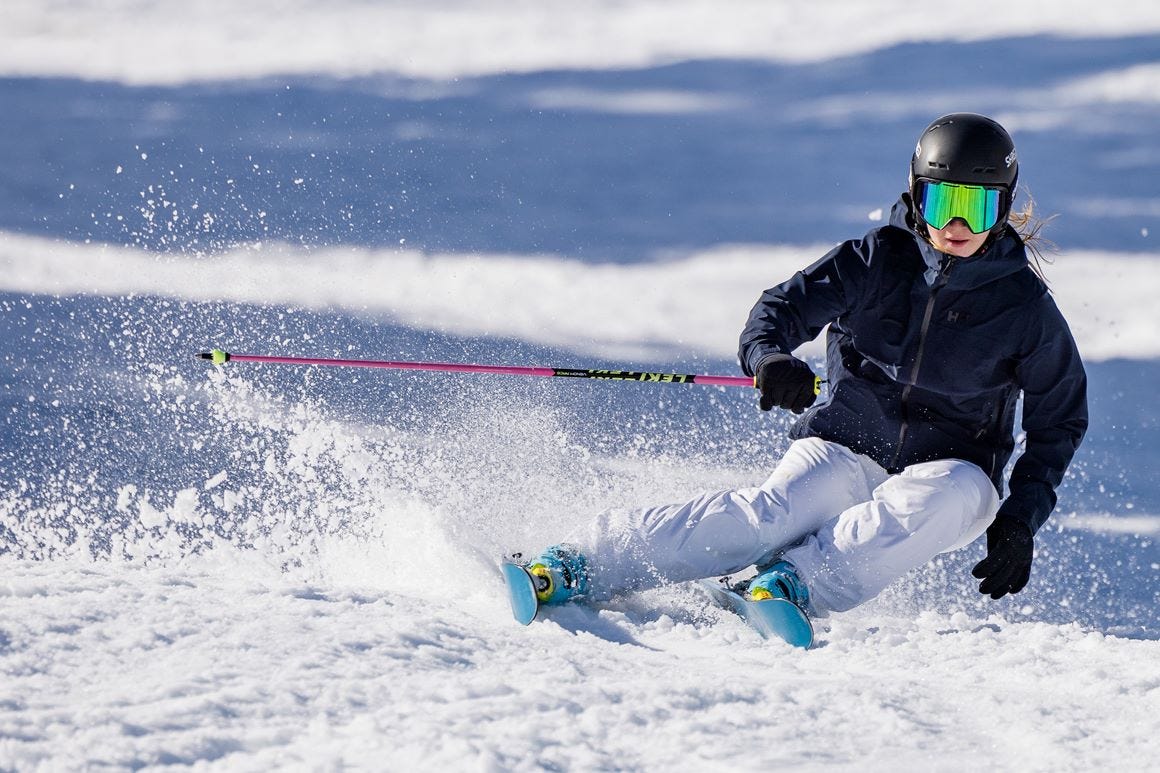
1. Resort Ski Jackets: Perfecting Your Mountain Getaway
If the slopes are your idea of the perfect vacation, then resort skiing is for you. Resort skiing involves skiing on designated trails within a ski resort, typically with groomed slopes, ski lifts, and amenities for skiers –think cafés or restaurants at the top of the ski lift and après ski fun. Essential factors in selecting a resort ski jacket encompass waterproofing, breathability, insulation, and fit. When it comes to the fit, be sure that there is room for multiple layers underneath, as we recommend the 3-layer system for versatility and warmth.
It is such an asset to have a jacket that is water and windproof to keep me functioning, but also breathes so that I don’t just lock in the heat, which could cause me to sweat.
2. Exploring Backcountry Skiing: Essential Jacket Features
Venture into the world of backcountry skiing, an off-piste adventure that embraces unmarked terrain beyond traditional resorts. This type of skiing demands total awareness of the risks and your surroundings. Safety equipment and precuation must be taken. If you’re in need of a backcountry ski jacket, look for features that match the climate, terrain and your activity level.
Key factors to keep in mind for a backcountry ski jacket:
- weather-protection
- enough room for layering on and off
- lightweight and breathable
- a powder skirt to keep out snow (highly recommended if you're not wearing a bib pant)
- backpack-compatible
The ideal jacket should also be easy to pack so you can take layers off as required. Most backcountry skiers prefer a shell jacket and will choose a midlayer that can be taken on or off depending on activity level; you don’t want to overheat on the way up the mountain. Some backcountry skiers prefer to skip the powder skirt in favor of bib pants for snow protection. Therefore, many of our backcountry ski jackets are lighter-weight (without a powder skirt), as they can be worn with snow-protective pants.
Backcountry ski clothing should have room for a beacon pocket and the outer layer should be backpack-compatible. Insulation, ventilation, and layering for adaptable comfort amidst changing weather conditions. Ultimately, the right backcountry jacket should contribute to an enjoyable mountain adventure.
No one spends more time in the mountains than ski patrollers in winter. Our latest Odin Backcountry collection is a reflection of their insights and feedback.

3. Big Mountain or Freeride Skiing
Big mountain or freeride skiing is an exhilarating style that takes skiers off groomed trails into unmarked, challenging terrain, allowing them to explore natural features like steep chutes, cliffs, and deep powder. Freeride is often called side-country, as people will often boot-pack from a resort or simply explore the black-diamond terrain. Big mountain skiers are always on the hunt for powder.
This type of skiing demands advanced skiing skills, decision-making, and safety awareness due to its unpredictable and wild nature, emphasizing both technical prowess and respect for the mountain environment.
From a safety perspective, many skiing enthusiasts value:
- RECCO rescue reflector system, which aids in avalanche search and recovery efforts, but can never replace a beacon.
- neon-detailing for extra visibility on the mountain
In terms of what to look for, Kaylin Richardson recommends:
a relaxed fit with plenty of room to layer and move;
a wide collar with soft inner fabric that's easy to zip all the way up on cold days;
large sleeve openings/cuffs to help you take your gloves on and off regularly to access a pack
I err on a little too long than too short [for a freeride jacket]—I do NOT want it riding up so that my base layer is exposed when buckling boots.
KEY FACTORS: WHAT MAKES A GOOD SKI JACKET?
So, what do we look for in a ski jacket? There are three main factors to take into consideration;
Size and fit
Warmth
Waterproofing
SIZING
Ski jackets can be unisex, but often have specific fits for men, women, or kids/juniors. Your ski jacket should fit comfortably (not too tight, nor too loose), enabling you to move freely. Trapped air is what provides warmth, so it shouldn't feel too tight. Think about what layers you're going to wear underneath. If you run cold, keep in mind that you may want space for a midlayer.
Helly tip: We recommend using our sizing chart to determine the ideal size for you.
Warmth: Look for Breathability and Insulation
There's nothing worse than a cold, uncomfortable day on the slopes. And this makes insulation and breathability two of the top features to look for in a ski jacket. The amount of insulation required depends on personal preferences, the temperatures on the mountain, and the kind of skiing you'll be doing. That said, breathability is vital to ensure that sweat doesn't get trapped within the jacket, leaving you feeling damp and uncomfortable. Our jackets, designed with insight from ski industry professionals, cater to your warmth needs, ensuring you stay cozy without compromise.
Waterproofing: are ski jackets waterproof?
If you're going skiing, there's always a chance of snowfall (and potentially falling over!). Waterproof or water-resistance is a key factor of a ski jacket. You'll find a wide range of jackets on the market, but remember: not all ski jackets are waterproof.
Many of our ski wear pieces feature HELLY TECH® — a waterproof and breathable shield between you and the elements. It's constructed with a special membrane that prevents water molecules from entering from the outside while allowing sweat to escape from the inside.
OTHER FEATURES OF SKI JACKETS
Ski jackets come with a variety of features, such as:
- Pockets - handy for keeping essentials such as phones, snacks, a beacon, skins, and wallets.
- Hoods and high collars - useful for protection from the wind and snow. Many of our ski jackets with hoods are designed to fit a helmet (around 84% of skiers and snowboarders in the U.S. wear helmets to ski or board).
- RECCO reflective technology, as mentioned above, can help rescue teams locate you in avalanches.
When browsing, it’s also a good idea to check the weight of your jacket because this can affect your comfort level. Check the sleeves and cuffs closely too. Many of our designs have adjustable cuffs to keep out cold air and snow, and accommodate different glove sizes. All these specialized features contribute to a good skiing experience, ensuring you can focus on the enjoyment of skiing.
WHAT TO WEAR UNDER A SKI JACKET
When it comes to layering beneath your ski jacket, smart choices can enhance your comfort:
Start with a moisture-wicking base layer that helps regulate body temperature by keeping sweat away from your skin.
Add an insulating mid-layer for warmth if required. This could be a fleece, sweater, or lightweight down jacket — something without too much bulk.
The final touch is your ski jacket, offering protection from the elements.
This layering system helps you to stay warm and dry through changing conditions and activity levels on your skiing adventure. Be sure to remember a pair of ski pants, which should have similar attributes to your jacket.
GEAR UP FOR SKI DAYS AHEAD

The best deal in skiing?
Get a day of skiing in one of over 50 premiere resorts in Europe and North America when you buy a ski jacket or pant from the latest Helly Hansen ski collection. Offers vary between a single day ticket, 2-for-1, and more, so make sure you note the type of offer when you pick your resort.
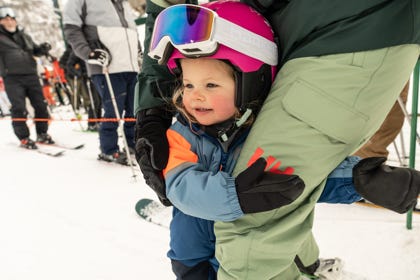
March 07, 2024 3 min read
How to Raise a Skier, First Day Out: Fulfill
Part 2 of Kaylin Richardson's series on how she is teaching her 3-year-old daughter to ski.
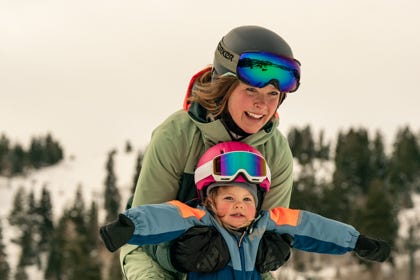
January 18, 2024 5 min read
How to Raise a Skier, Pre-Season Prep: Thrill
Two-time Olympian skier Kaylin Richardson teaches her 3-year-old daughter to ski and brings us along for the ride.
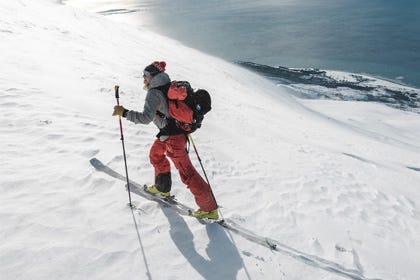
January 09, 2024 4 min read
What to Wear Ski Touring
To dress for ski touring, you want to be able to regulate your body temperature while staying protected against the wind and snow in all conditions. This guide shows you how.
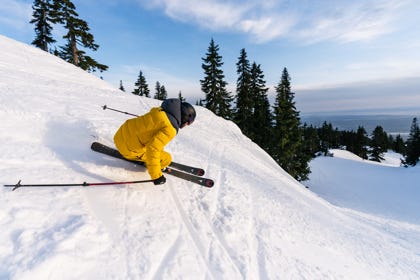
November 03, 2023 6 min read
How to Clean and Waterproof a Ski Jacket
This guide shows how to properly clean and re-waterproof ski jackets. Keep your ski jacket performing like it should.
